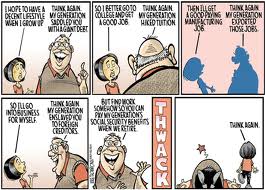Posted at 17:07h
in
Uncategorized
by Anne Boysen

Social change is often extremely slow, especially when deep seated norms are involved. Gender roles have demonstrated their staying power even in sociospheres where gender equality has long been the official mantra. Haven’t we all met the guy who speaks passionately about women’s rights all while parking the kids in front of the TV and leaving the dirty dishes in the sink? Or the “career mom” who laments (or brags) about her overwhelming domestic chores and how she does it all? It may not be so surprising after all that women, according to
a recent study, probably will have to wait until 2050 before men are doing an equal share of the household chores and childcare. In other words, it will take our youngest generation and two generations more before equality between the sexes has been fully achieved. But where? The study seems to focus primarily on the US and UK and claims the upward trend in male domestic participation has leveled off in some (which?) countries.
 "Kids nowadays! Hmpf!" Whether you're 5 or 85, at some point you might unwittingly have been dragged into a generational comparison in which your age cohort is made out to look ruder, lazier or more spoiled than the bygone youth of the spokesperson. The statement is often followed up with a sentence that starts with "In my days.." Usually we attribute this type of sentiment to the occasional hissy fits endured by otherwise beloved older relatives whenever the need to blow off some steam escalates to intolerable proportions. And often it is better respond with an approving nod than to go into a drawn-out and probably futile explanation about "how things have changed" and how the old ways of doing things simply won't work anymore. Or we reason that the curmudgeon is probably right anyway, that we're all degenerating under moral standards in free fall.
"Kids nowadays! Hmpf!" Whether you're 5 or 85, at some point you might unwittingly have been dragged into a generational comparison in which your age cohort is made out to look ruder, lazier or more spoiled than the bygone youth of the spokesperson. The statement is often followed up with a sentence that starts with "In my days.." Usually we attribute this type of sentiment to the occasional hissy fits endured by otherwise beloved older relatives whenever the need to blow off some steam escalates to intolerable proportions. And often it is better respond with an approving nod than to go into a drawn-out and probably futile explanation about "how things have changed" and how the old ways of doing things simply won't work anymore. Or we reason that the curmudgeon is probably right anyway, that we're all degenerating under moral standards in free fall.






